High in the California mountains, a ski resort sits buried under layers of snow and ice. Residents of Mammoth Lakes fear for their lives, and livelihoods, after a winter of record snowfalls.
Wooden houses are blanketed under white powder, cars are buried beneath cement-like drifts, and roads are lined by colossal snow banks stretching up to 50ft tall. Every so often a dagger-like slab of snow or ice will slide from a rooftop and shatter on the ground
They’re used to a lot of snow in Mammoth Lakes. In fact, it’s vital for the economic survival of the town but nobody could have expected what happened this winter.
A series of so-called atmospheric rivers – narrow bands of moisture which carry precipitation from the Pacific Ocean over the west coast of the United States – hit California.
These storms have been unusual in their frequency and intensity following a decade of drought, transforming the Golden State into the sodden state.
In Mammoth, the snow fall was three times the historical average. When we visit, a month past the peak, the walls of snow are still as tall as two double decker buses in parts.
Steve Searles, known in Mammoth Lakes as the “Bear Whisperer” because of his decades as a wildlife conservationist, has now become a custodian of the community. In his pick-up truck, he is connected to the emergency service radio communications. An alert comes through about part of a house collapsing.
It’s no surprise to Steve.
“This is another one that just went boom,” he says, pointing to the remnants of a house that looks like it exploded but was actually brought down by the sheer weight of the snow.
In his own home, he has dug a path to allow him to open his back door but inside it is dark 24 hours a day because the snow is so tightly packed against the windows. “People here have been living in darkness for months,” he says, “it’s like being squeezed by an anaconda. We kept screaming, ‘help us’ but nobody cut the damn head off.”
But Steve, like everyone here, knows that this is a catastrophe in two parts and the worst is, likely, yet to come.
He points to the snow piled on top of his garage. “This is just over 20,000 gallons of water and that’s only my little roof. There’s nowhere for this water to go when it does start to melt,” he says, “As soon as it goes one or two degrees above freezing at night, then the flooding will begin.”
It is a slow motion disaster and it’s not just the people of Mammoth who are living in fear. The expectation is that once this snow starts to melt, it will send torrents of water gushing downstream.
Read more:
California lake reappears after 100 years and causes havoc
Most powerful tornado in 40 years hits Los Angeles suburb
In California’s central valley, the snow-capped mountains, far in the distance, are a spectre of doom.
The near-record rainfall in California is already transforming the landscape here and that is before the big melt begins.
Corcoran is a town of 25,000 people and home to some of America’s most productive farmland, with an agricultural industry worth $2bn (£1.6bn). It is currently witnessing the remarkable rebirth of Tulare Lake, once the largest body of freshwater west of the Mississippi.
Tulare Lake was drained by farmers before completely disappearing by the mid-part of last century. But it is reappearing with a vengeance, already covering 30 square miles, an area roughly the size of Coventry, it looks like a vast inland sea. Experts predict that over the next couple of months it could grow to 200 square miles.
The flooding here happened too quickly for people to prepare and some workers have returned to the edge of the new lake with rowing boats to try and retrieve their drowned equipment.
Jordan Silva is looking for a 40ft long piece of a combine harvester. “This is only from rainwater,” he says, “the snow hasn’t really melted at all. So this is actually kind of nothing right now. It’s going to get way, way worse.”
Beneath the waves are thousands of acres of pistachio trees, alfalfa and wheat fields, including 900 acres belonging to fourth generation farmer Bob Hansen.
On dry land, Bob tells me he is busy devising an evacuation plan for his 20,000 cattle.
“If the temperatures go up and they stay up, we’re done,” Bob says, “We’ve got a historic snowpack and if it were to all come down in a short period of time, the levees won’t hold. There is a very high potential at that point in time that the city of Corcoran goes underwater.”
At the lake’s shoreline, helicopters fly in sandbags and the army, in tractors, are helping shore up the levee to try to protect the city of Corcoran. This area has now been declared a disaster zone.
We are there when the state’s governor, Gavin Newsom, pays a visit. Over the past year he has toured wildfires, drought sites and now numerous areas in California that are underwater.
“There’s not a climate expert or a meteorologist that doesn’t say the following: “We’ve never seen this weather at this level of intensity and extreme”. That’s what is exacerbating the conditions that we’re experiencing,” he says.
I ask what he thinks would have to happen for people to believe in climate change. “Just visit California,” he says with a shrug of the shoulders.
Even those who are more sceptical about climate change cannot deny the reality that more water is on its way to California’s central valley, even to the parts already underwater. For the people who live and work here, that is a terrifying prospect.
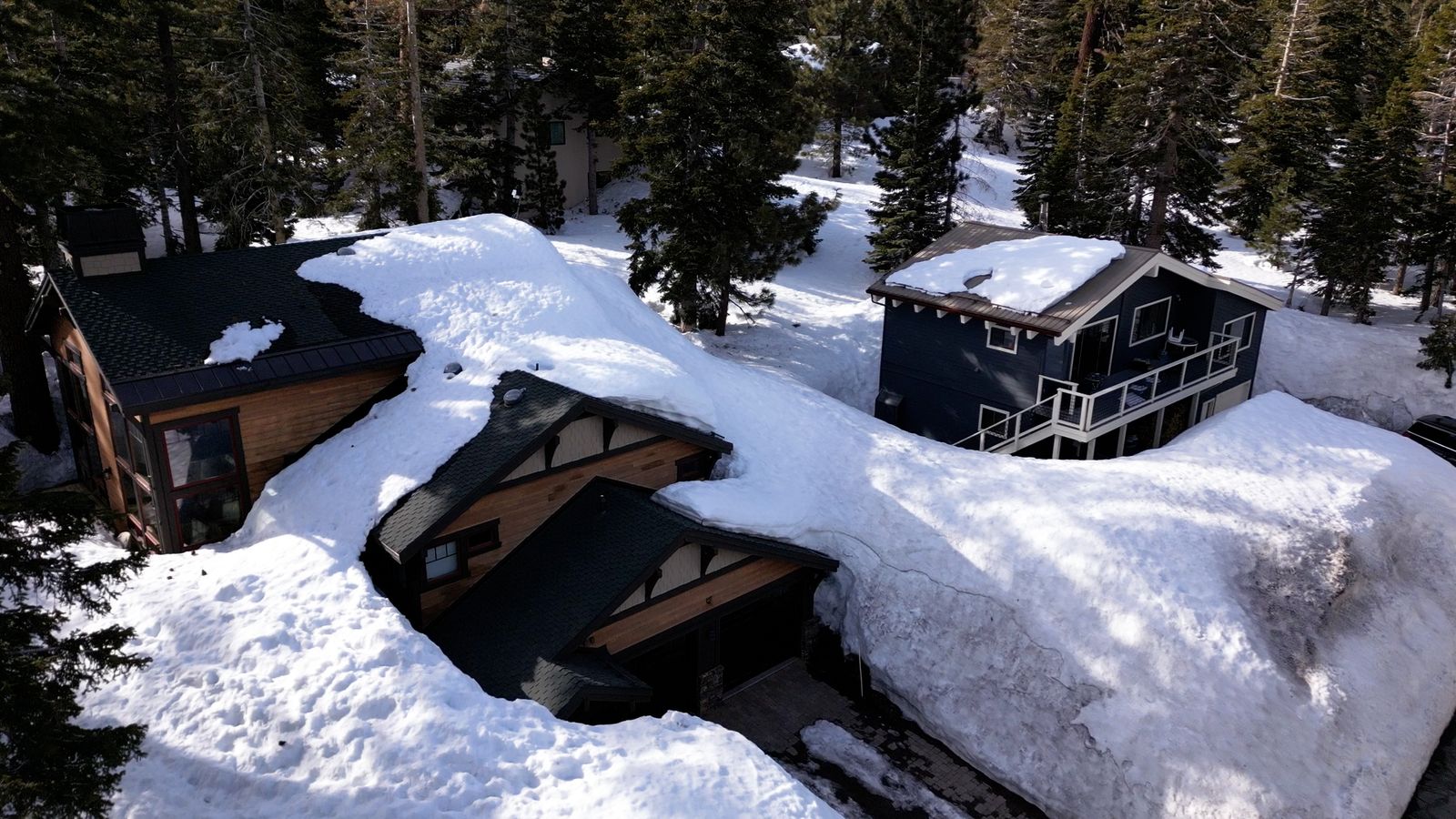


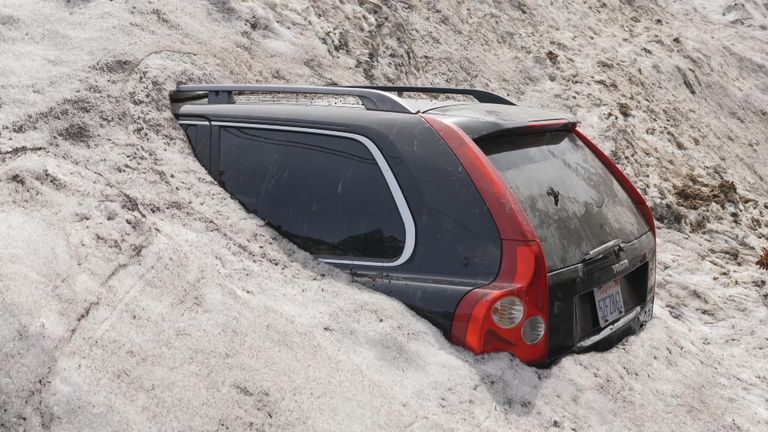

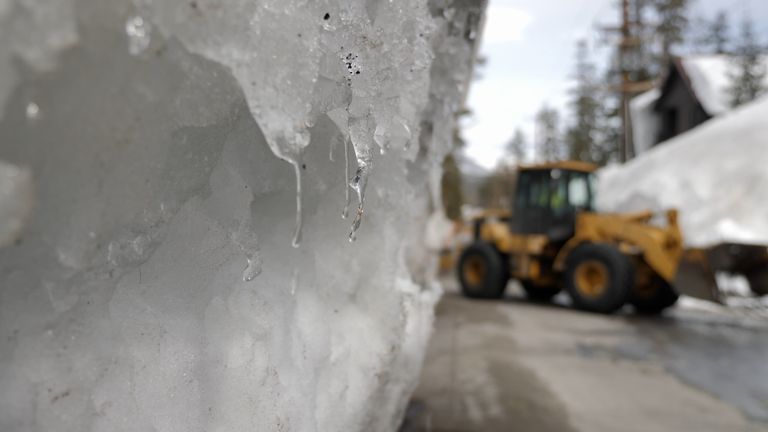
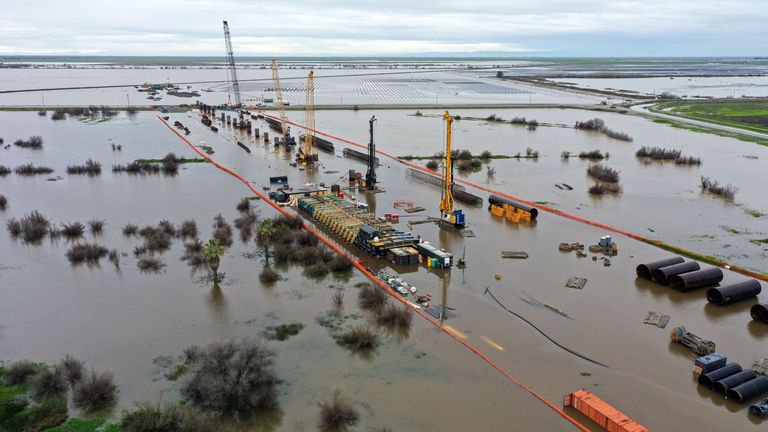
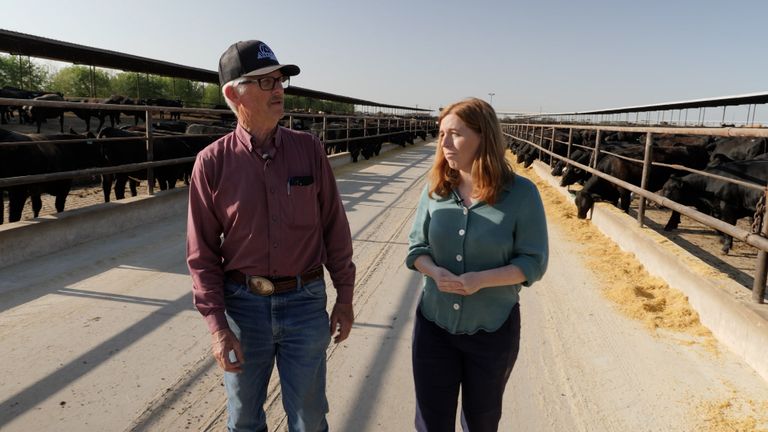
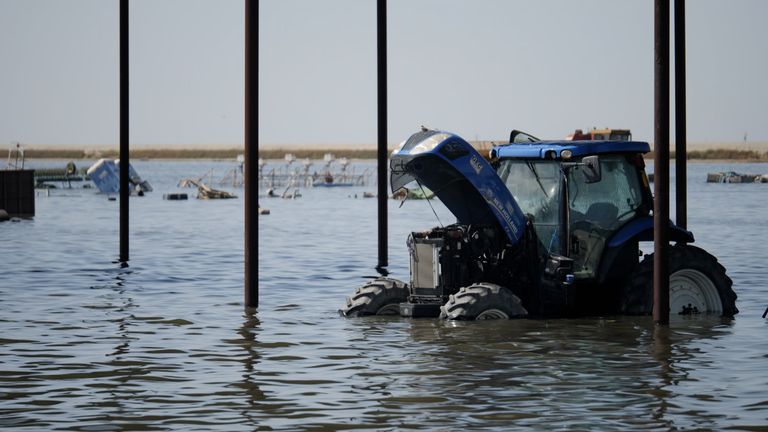
Climate change is real. It’s called seasons. It’s also called cyclic weather patterns, which happen at various periods of time, whether it be 50, 100, 200 or even 500 year cycles. Regardless of what kind of pattern it may be, they are not human caused. Weather is completely the product of the nearest star (the sun) acting upon the atmosphere, sea and landforms of planet earth. It may, on occasion, be influenced by a major natural catastrophic event on earth such as a large volcanic eruption that ejects enormous amounts of particulate matter into the atmosphere. Man does not, nor can he ever hope to control those forces. To say otherwise is one of the most arrogant things one might say.